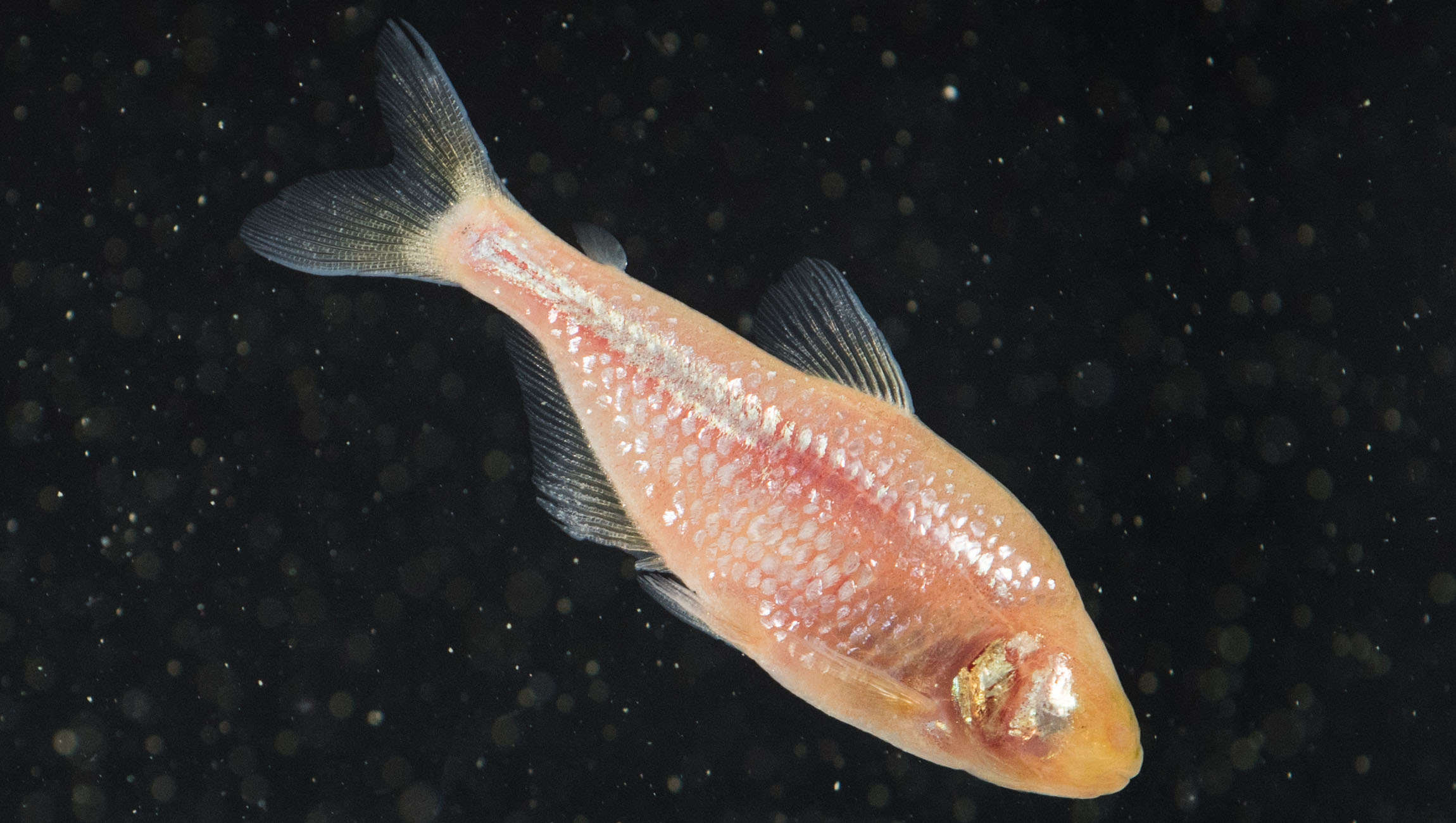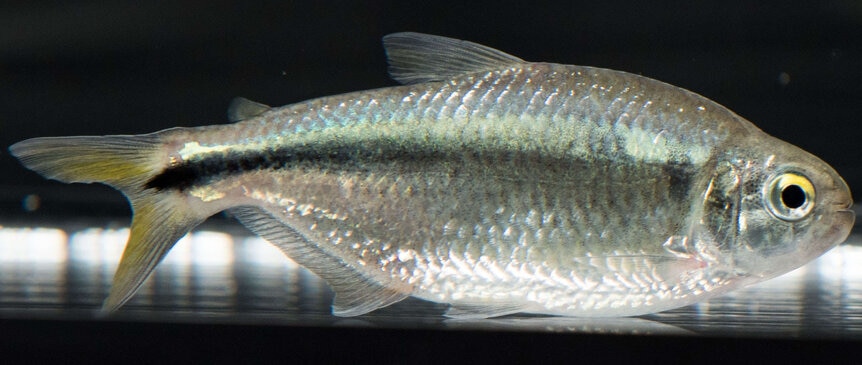Create a free profile to get unlimited access to exclusive videos, sweepstakes, and more!
Creepy eyeless fish have bizarre genes that could someday reverse an incurable human disease

Whoever thought that a cure for a mysterious illness could possibly come from a fish that dwells in darkness?
The Mexican cavefish is actually a mutation of the sighted Mexican tetra, though it looks like a completely different species. Millions of years of lurking in caves devoid of light and lacking in oxygen caused the fish to evolve a gene mutation that cuts off blood flow to the eyes in embryonic development. While cavefish look eyeless, they actually have vestigial eyes, a remnant of what they used to have until they no longer needed it. Biologist Li Ma and his research team have now found which gene causes its eyes to be nonfunctional — turns out the same gene is behind the incurable (for now) human disease homocystinuria.
“Mutations in the human cbsa gene are the major cause of homocystinuria, a disorder in methionine metabolism resulting in toxic [homocysteine] accumulation and eye abnormalities. In fact, the small eyes of [cavefish] larvae resemble the eyes of some homocystinuria patients in showing an 'off-center' lens,” said Ma, who led a study recently published in Nature Communications.
Humans are obviously not related to fish. Though all creatures that live on land are thought to share the same ancestor that first crawled out of water — things like Abe Sapien don’t just exist in science fiction. Ma’s team used CRISPR to alter a gene in cavefish embryos. They found that eye degeneration in cavefish is partially caused by the mutation of this gene, cystathionine ß-synthase a, or cbsa. DNA is made up of amino acids. The cbsa gene normally encodes the enzyme most responsible for a critical amino acid conversion process.
When this gene is deactivated, it results in restricted blood flow to the eyes. That can cause potentially fatal aneurysms, brain hemorrhages, and heart attacks. The cave-dwelling Mexican tetra is thought to have evolved such a mutation because it took too much energy to maintain vision in a place where there was almost nothing to be seen.
Cavefish lose their eyesight before they ever spawn. The researchers observed how they developed as embryos, finding that changes occurred in several parts of their genome when they lost their sight. Mutations in the cbsa gene happened to all the blind cavefish embryos, but were absent from Mexican tetras that can see. Swimming in darkness was one evolutionary cause. Another cause that Ma’s team found was hypoxia, a severe blood oxygen deficiency. There were more hypoxia gene markers in the heads and eyes of the cave fish embryos. Caves are notorious for lacking oxygen. Because the defective circulatory system of the fish cannot deliver oxygenated blood to its eyes, Ma’s team believes that hypoxia is another reason for eye malformation.
“The reliance of eyes on oxygen, nutrients, or humoral factors provided by blood flow would explain why [cavefish] form eyes early in embryogenesis and eye regression begins later during larval development,” Ma explained, adding that “defective circulation, rather than the effects of hemorrhages or aneurysms themselves, is the critical factor induced by the [mutated cbsa].”
So what does this mean for homocystinuria in humans? There are still other unknown genetic anomalies that factor into the disease, but finding one of the most important mutations could someday bring a cure to light.



























